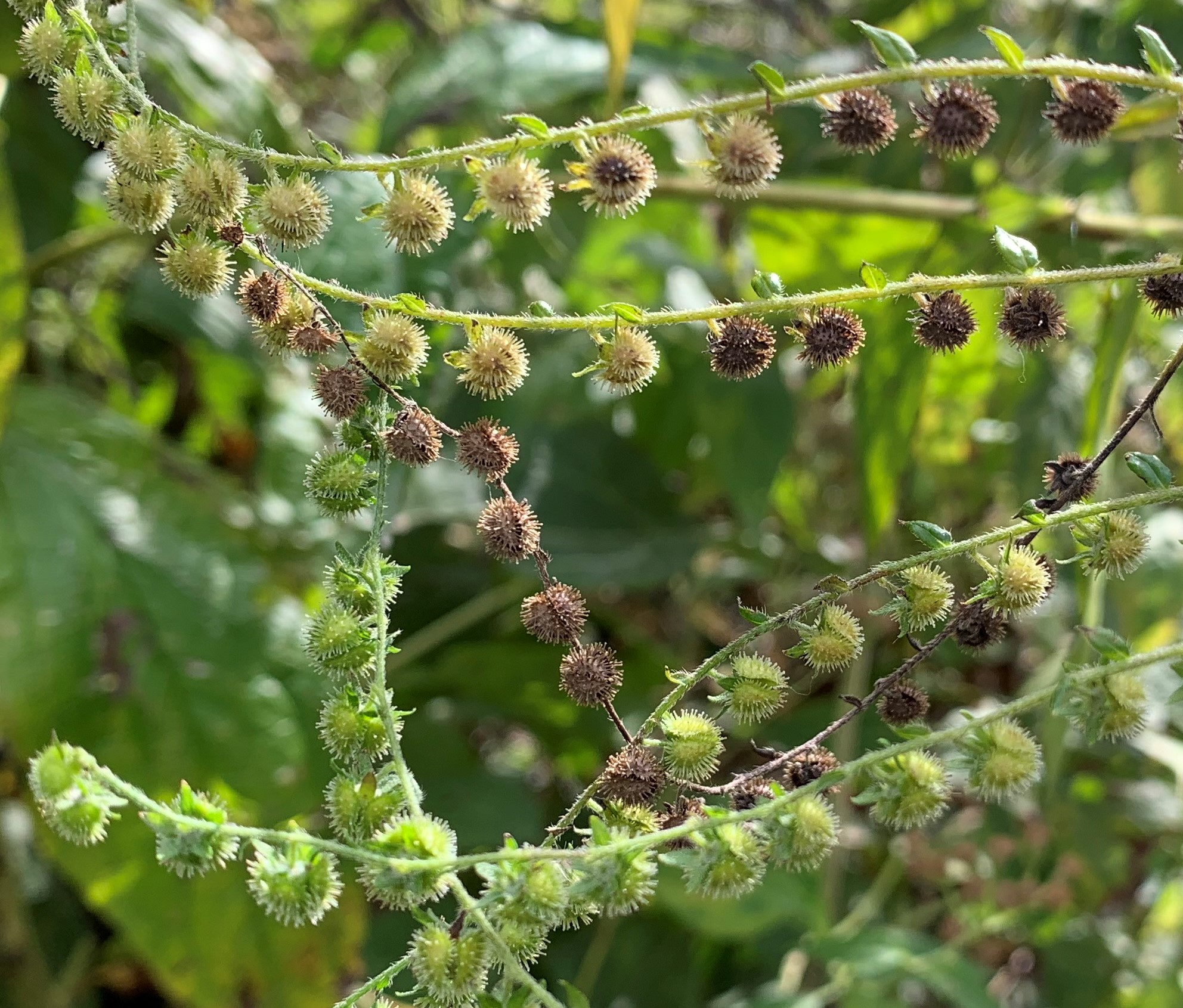Beggar lice. It sticks to everything! Dave’s coat; my hair; my socks, jeans, jacket and sweatshirt, even the strap on my hiking stick. We’ve gone for a walk in the woods on a beautiful autumn day looking for hickory nuts. What we got was 13 hickory nuts and bazillions of beggar lice.
The term “beggar lice” originated in America and was first recorded in the early 1800s. It has been applied to several types of plants, but the one we were dealing with was classified as hackelia virginiana. But why use such a formal, and to a lay person nondescript, Latinized name when the plain English term Beggar Lice has such a poetic and descriptive character? It does go by other names as well that may not be quite as poetic—sticktight, or Virginia stickseed. What these terms lack in poetry, they make up for in accuracy. You may look like a beggar covered in lice after you go for a walk in the woods, but you’ll curse the way these little seeds stick tight to everything while you’re trying to get them out of the dog’s fur and off of your socks.
The primary culprit here is a biennial woody plant. In its first year, it has a rosette of leaves around the base—no big deal. In its second year, though it grows three to four feet high. In the summer, it produces pretty little five-petaled white flowers. By September, those pretty little white flowers have produced little green to brown fruits with four tiny seeds fitting together into a sphere. Each sphere of seeds is completely covered with nasty little prickles with little hooks on the ends. The plant holds its arms straight out at just the right height for a deer or a dog. the seeds cling in a regularly spaced row on the bottom side of each arm. There, they lie in wait for a hapless critter to brush against them and give them a ride. They will sink their little hooks into a deer, or a dog’s fur, and cling there for days, falling off eventually far away from the parent plant. The lightest contact, or, I swear, no contact at all, will be enough for the beggar lice to leap from the branch onto a sleeve or a shoestring, sometimes they bring the branch with them because all of them on the branch have instantly embedded themselves into their transport host. The branches have become brittle, so they break off easily, ensuring that the little devils don’t get pulled back when the host leaves the area.
Their goal is to spread the seeds far and wide so they can colonize ever more space. They stand ready and willing to cover any disturbed ground they can find, and are so prolific that they can cast their nets well beyond the parent plant. On Owl Acres, we find them in the woods and in the fence rows. Or, rather, they find us whenever we venture in those directions. I’m still picking the stickers out of my favorite sweatshirt after a particularly robust encounter with them.
Getting them out of clothing and fur requires patience and a comb. You take the comb, stretch the fabric, and try to comb the beggar lice off. Most of them come off with persistence, but many leave a final prickle or two behind which has to be picked out by hand. Some got so deeply tangled in Dave’s fur that I had to coax each one out carefully with patient fingers. And then their prickles tried sticking in my skin. Neither of us was very happy about it.
Hackelia Virginiana is native to North America, and is found throughout eastern Canada and the Eastern and Midwestern United States. It was used in native American medicine and, oddly considering how aggravating and annoying it is, it was used in love potions as well. It isn’t the only plant that creates little burrs designed to drive you crazy while they spread their seeds, but on Owl Acres, it’s the primary offender. Deer are said to avoid eating it because of its bitter leaves, leaving it alone to form dense colonies wherever it can. Where are the deer when you need them?
Photo by Author

1 comment